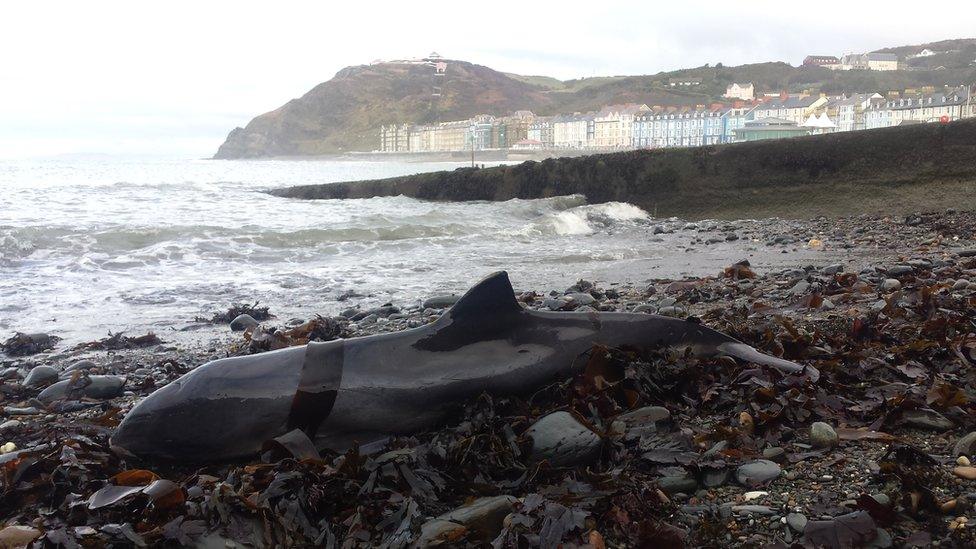'Toxic chemical cocktail' passed to baby porpoises
- Published

Stranded porpoise on a beach in Wales
Baby porpoises in waters off the UK are being exposed to a cocktail of chemicals in their mother's milk.
Research found the most potent pollutants, which may be toxic to the brain, are passed from mother to calf.
The chemicals are among the 200 or so polychlorinated biphenyls (PCBs), which accumulate in the bodies of dolphins, porpoises and whales.
PCBs were once used in plastics and paints. Banned decades ago, they hang around in the environment.
The toxins that linger longest in a mother's body - and are considered more poisonous to the brain and nervous system - are transferred to infants in milk, a study found.
"It's a tragic irony that juvenile porpoises are being exposed to a toxic cocktail of chemicals during feeding - when all they're supposed to be getting are the vital nutrients they need for the crucial developmental stage of their life," said Rosie Williams of ZSL's Institute of Zoology and Brunel University London.
What is the legacy of PCBs?
PCBs have been linked with a number of risks to whales and dolphins, particularly in the early stages of life. A recent study found dolphins living in the English Channel were exposed to a "cocktail of pollutants", which are passed down from mother to calf.
Killer whales face threats from PCBs
Meanwhile, one killer whale (orca) found dead off Scotland in 2016 contained among the highest levels of polychlorinated biphenyls, or PCBs, ever recorded. PCBs could lead to the disappearance of half of the world's populations of killer whales from the most heavily contaminated areas within a period of just 30 to 50 years, scientists concluded last year.
What did the research find?
The study looked at levels of more than 200 chemical pollutants that are collectively known as PCBs in hundreds of harbour porpoises stranded off the coasts of Scotland, England and Wales.
Juveniles had the highest levels of chemicals thought to be most toxic to the brain and nervous system.
It's vital to learn more about PCB exposure in juvenile animals "to mitigate the impact of these dangerous chemicals on populations", said Prof Susan Jobling of Brunel University London.
Populations of harbour porpoises around the UK are believed to be stable, though they face threats from pollution, accidental fishing and infection. The situation is much more dire for killer whales, which are down to a handful of individuals.
"We only have eight killer whales left of our resident population," said Rosie Williams. "This kind of work can be used to inform policy and conservation for those much more threatened species."
The latest research is published in the journal .
Follow Helen